10 wild ’90s concept cars
For those who love the weird and wonderful world of the concept car, no period is more diverse, vivid, or plain crazy than the 1990s.
Traditionally, manufacturers might roll out a concept to preview a new vehicle or visualize an idea. The 1990s, however, is when carmakers let their designers run riot, echoing the optimism of the decade with bright colors and bold shapes.
Simply choosing what to include on this page was challenging, so to best show off the diversity of ’90s concepts, we’ve ruled out those that directly previewed production models—like 1993’s Boxster, 1994’s Volkswagen Concept One, or 1995’s Honda SSM—as well as out-and-out supercars like the Ford GT90 or Audi Avus, which deserve column inches all to themselves.
This, then, is a cross-section of the wildest concepts of the 1990s—and a preview of an alternate reality of BMW city cars, two-stroke Toyotas and sporty Honda pickups.
Mini ACV30 (1997)
The ACV30 sneaks through our self-imposed “no production-car previews” rule because, while it’s clearly inspired by the classic Mini, the R50 Mini that eventually appeared at the turn of the millennium wasn’t strictly a derivative of this mid-’90s concept.
Rover unveiled the ACV30 at the 1997 Monte Carlo Rally, 30 years on from the Mini’s final victory at the famous race. But far from being a front-drive city car, the ACV30 was basically an MGF underneath: its engine was in the middle.
That explains the sporty, coupe-like silhouette, something Mini wouldn’t explore in production form until 2011. But the ACV30 previewed the millennial Mini’s look (the wrap-around glass and floating roof) in a way Rover’s Spiritual concepts didn’t—not least because, according to AROnline, eventual R50 Mini designer Frank Stephenson was involved in styling the concept.
Alfa Romeo Nuvola (1996)

Walter de Silva—subsequently of SEAT, Audi, and Volkswagen—transformed Alfa Romeo’s product line in the 1990s. Attainable beauties like the 156 and 147 were designed under his tenure, with curves that hadn’t been seen in Alfa’s range since the 105-series coupes disappeared.
The first sign that de Silva’s design office was working on something special was 1996’s Nuvola concept, designed at Centro Stile and built by coachbuilder Stola. A traditional front-engined (with a twin-turbo, 2.5-liter Busso V-6), rear-drive sports car, it was the undisputed star of that year’s Paris motor show.
Alfa didn’t build it, of course. But beyond providing a simple statement of intent, the Nuvola did give Alfa Romeo’s range one key characteristic that made its road cars just a little more special: its color. Nuvola Blue was subsequently offered across the Alfa range, and is as beautiful on a GTV or 156 as it was on the concept that lent its name. You can still see the Nuvola today, at Alfa Romeo’s museum in Arese.
BMW E1 (1991)
In our 1980s concept car list we explored how Mercedes-Benz had been investigating “megacity” vehicles since the early 1980s with the NAFA (Nahverkehrsfahrzeug, or short-distance vehicle). It took BMW a little bit longer (unless you count the 1950s Isetta) but the E1, shown at Frankfurt in 1991, showed what the brand was considering internally.
As you might infer from the name, E1 was electric—not BMW’s first foray into the technology, but a serious investigation nonetheless as the environmentally conscious 1990s dawned. A 124-mile range showed BMW knew what it was doing, though a 43-horsepower motor and 75-mph top speed reduced any autobahn credentials.
It is, with the best will in the world, a goofy-looking thing, looking a little like a Honda CRX that someone had stretched upwards. It was unlikely to ever sit alongside the new E36 3 Series in BMW’s range, and it’s a bit too friendly to work as part of the automaker’s modern range, but park it next to a Z1 and you might find more similarity than you’d expect.
Ford 021C (1999)
Without a doubt one of the decade’s most divisive concept cars, the 021C was the work not of an automotive designer but of a product designer, Marc Newson. Best known for furniture and jewelry, Newson incorporated his signature themes of soft curves and bold colors into a compact, pillar-less sedan.
The name was a double entendre, referring both to the coming millennium and to the concept’s color on the Pantone scale. At the front a large, single light bar served as a headlight, and its counterpart at the rear opened up like a kitchen drawer.
Built by Ghia in Turin and displayed at the Tokyo motor show (where it won Best Concept, quite a feat given the Tokyo show’s usual output in this department), 021C showed the value—sadly, rarely exploited in the car industry—of minimalism. The 021C was later shown in a fetching lime green, and looked just as striking, though the name made a lot less sense as a result.
Ford Ghia Vivace (1996)

Ford had some of the most eye-catching concepts of the ’90s—from the crazy GT90 and Indigo supercars to the Zig and Zag superminis—but the Vivace represented probably the purest expression of the brand’s styling for the 1990s, at least until the Focus came along and debuted “New Edge.”
This was a motor-show exercise in the purest sense of the word, with no hope of existing. Nominally based on the Contour, it lacked anything to actually make it go, being little more than a styling buck. And with that Focus arriving soon, even the styling would soon be out of date.
But as a snapshot of the 1990s, somebody got a great deal when the Vivace show car actually came up for sale on Bring a Trailer in 2020, and sold for little more than $3000. It really would need a trailer, since there’s not even a functioning interior, and underneath it’s all steel girders, but the buyer aimed to put it in their museum in California, for everyone to enjoy once again.
Honda Spocket (1999)

Nope, not sprocket, like the counterpart to a bicycle chain. The name chosen by Honda is weird and seems to have little meaning, but the car to which it was attached was far more interesting. First shown at the Tokyo motor show in 1999 (the same show as the 021C further up), the Spocket was Honda letting its corporate hair down.
That hair was probably a mullet too, since the Spocket was a pickup—albeit a small one, measuring over 14 feet long and sitting a bit too low to be much use on a construction site. Not unsurprisingly, it was the work of Honda’s studio in Torrance, California, but it was far from some brutal muscle car.
Instead, the Spocket used a four-cylinder engine to power the front wheels and an electric motor for the rears. With bucket seats and harnesses up front and a load bay behind, the Spocket was a kind of reverse ape-drape: party up front and business behind. While it never got close to production, Honda still had an eye on the compact coupe market, eventually launching the CR-Z in 2010.
Jaguar XK180 (1998)

One of many revivals of the E-Type idea, the XK180 presented at the Paris motor show in 1998 was the one we all secretly (or maybe not so secretly) hoped would make production.
Just look at it! Okay, it’s very much a shape of the 1990s now, lacking definition in some of its details (perhaps a little too close to the production XK8 of the time) and almost looking lost in that Ecurie Ecosse–like color scheme in some lights.
But with a double-bubble windshield, open cockpit, turned-aluminum dashboard, and a 450-hp supercharged V-8 under the bonnet, it certainly had the knockout visuals to do justice to the original E-Type. So much so, in fact, that a handful of companies have built functioning replicas based on XJSs and XK8s.
Peugeot Nautilus (1997)
Pininfarina is often (and erroneously) cited as the design house behind many of Peugeot’s most popular shapes, but squint a bit and you could argue 2010’s 508 had some Pininfarina inspiration—as it bore more than a passing resemblance to the Pininfarina-penned Peugeot Nautilus concept of 1997.
Truth be told, most of that similarity is in the grille and the downward-sloping headlights, but it’s strange how that likeness skipped a whole generation of Peugeot’s cars—the 407 launched in between 406 and 508 looked nothing like the concept, though its wheels did make it into the 406 Coupé range, dubbed, quite appropriately, Nautilus.”
Enough about production cars, though. The Nautilus was a large, French car in the best tradition, long and elegant and beautifully trimmed inside, with a steering wheel hub aping the eponymous sea creature. Drive was more prosaic—PSA’s 3.0-liter V-6, driving the front wheels—but inside, outside, or under the sea, we doubt you’d mind.
Renault Fiftie (1996)
Sorry to do this to you, but the Renault Fiftie, built to celebrate the 50th birthday of the Renault 4CV, is now more than half as old again, given it was created in 1996. What’s interesting is that it walked the same retro-futuristic visual path as the Alpine A110 went down just over two decades later.
Not that we’re trying to compare the pair, though there’s one other significant similarity: underneath the Fiftie’s cute bodywork was a Renault Spider. This made it mid-engined, and of course, the Spider was built at the same Alpine facility in Dieppe that the A110 now emerges from.
Well, not all of the Spider made it—the engine was a simple 1.2-liter from the Clio. But who cares when it looked like it did? The interior was simple, and as a two-seater with a sliding bench seat, spacious too. The dash was trimmed in Fablon—remember that?—with wicker panels below and a central speedometer. Had Renault built it, Nissan Figaro–style, it would surely be considered a 1990s icon.
Toyota AXV-IV (1991)
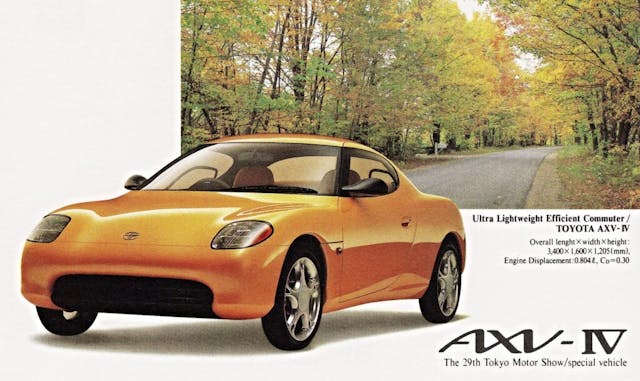
The Tokyo motor show is consistently home to some of the wildest concept cars, and 1991’s was typically special. One of the most eye-catching of all was actually one of the most sensible, in intent if not execution: Toyota’s compact AXV-IV.
Visually, it’s distinctive if unremarkable: a small coupé you might expect to be powered by a kei-class 660cc engine. The reality, though, was an 804-cc, two-stroke, 10-valve, twin-cylinder diesel producing 64 hp. Toyota claimed excellent around-town torque, low noise, and minimal vibration.
Combined with an astonishingly lightweight aluminum, magnesium, and composite structure—coming in at 989 pounds, or similar to the weight of a Caterham Seven 170—the AXV-IV promised extreme economy with willing performance. Tech such as resin springs that also served as suspension arms could have made this the cleverest small car ever created; alas, it was never to leave the drawing board.
***
Check out the Hagerty Media homepage so you don’t miss a single story, or better yet, bookmark it. To get our best stories delivered right to your inbox, subscribe to our newsletters.
Via Hagerty UK


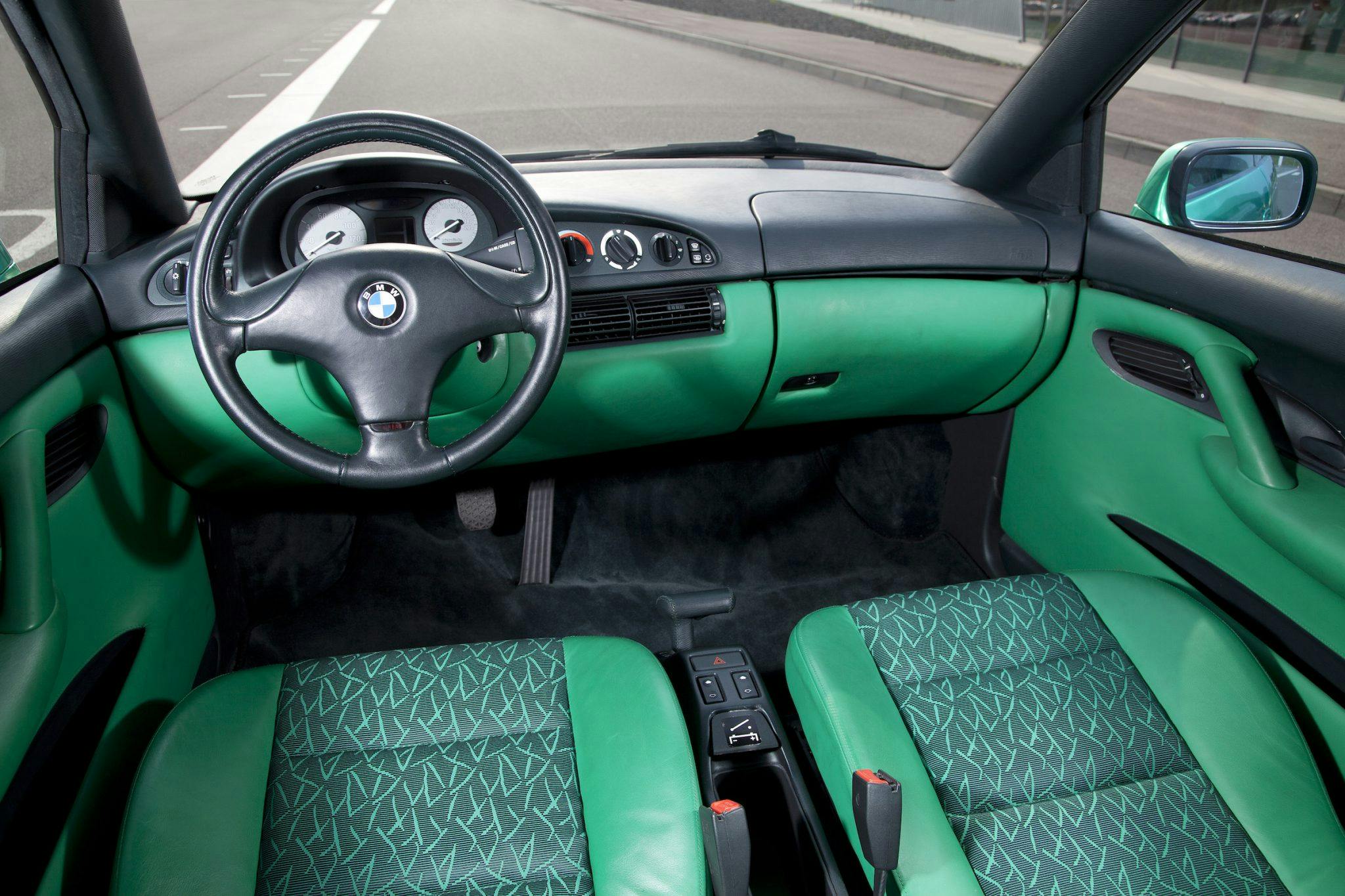
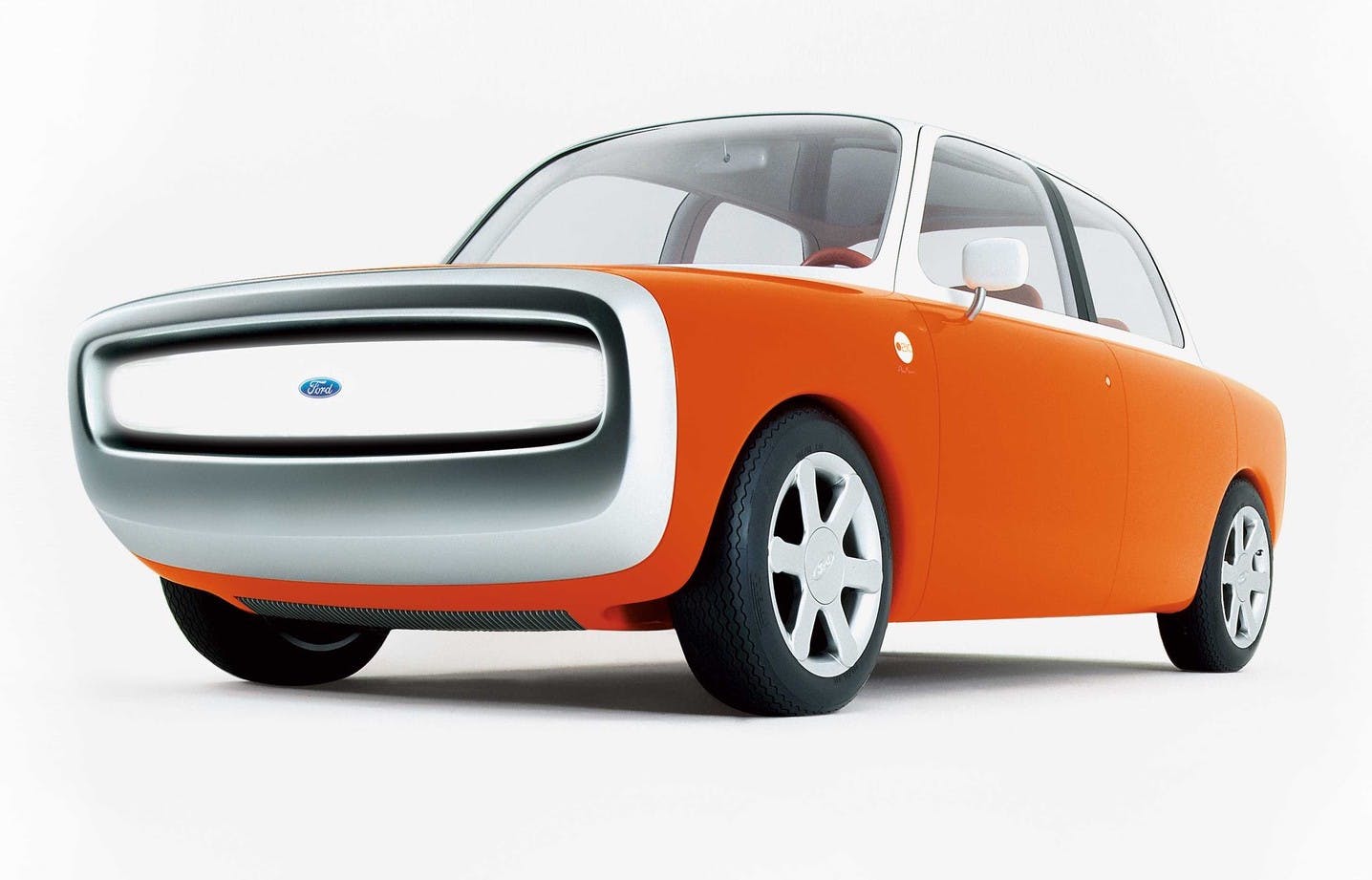

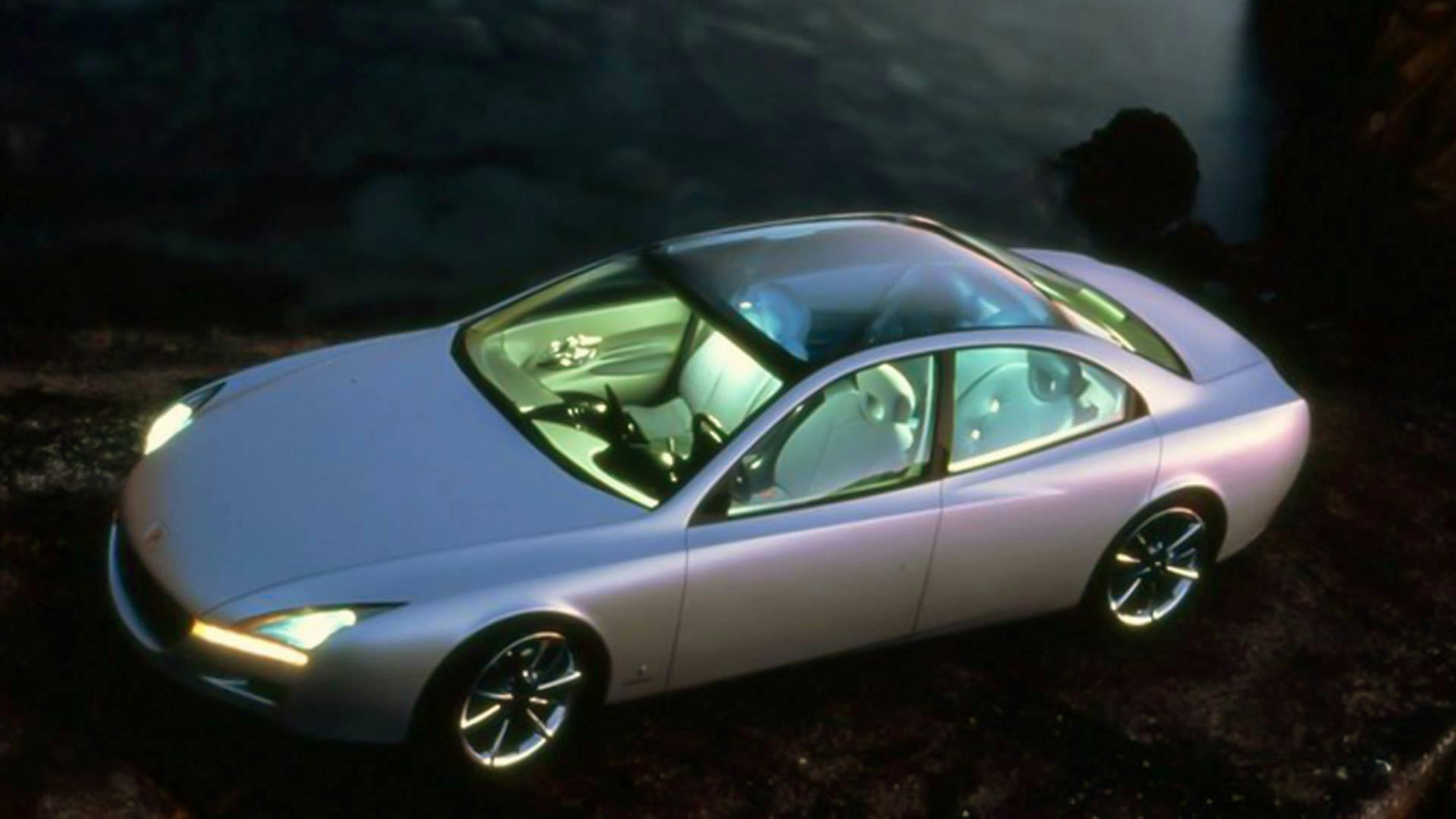
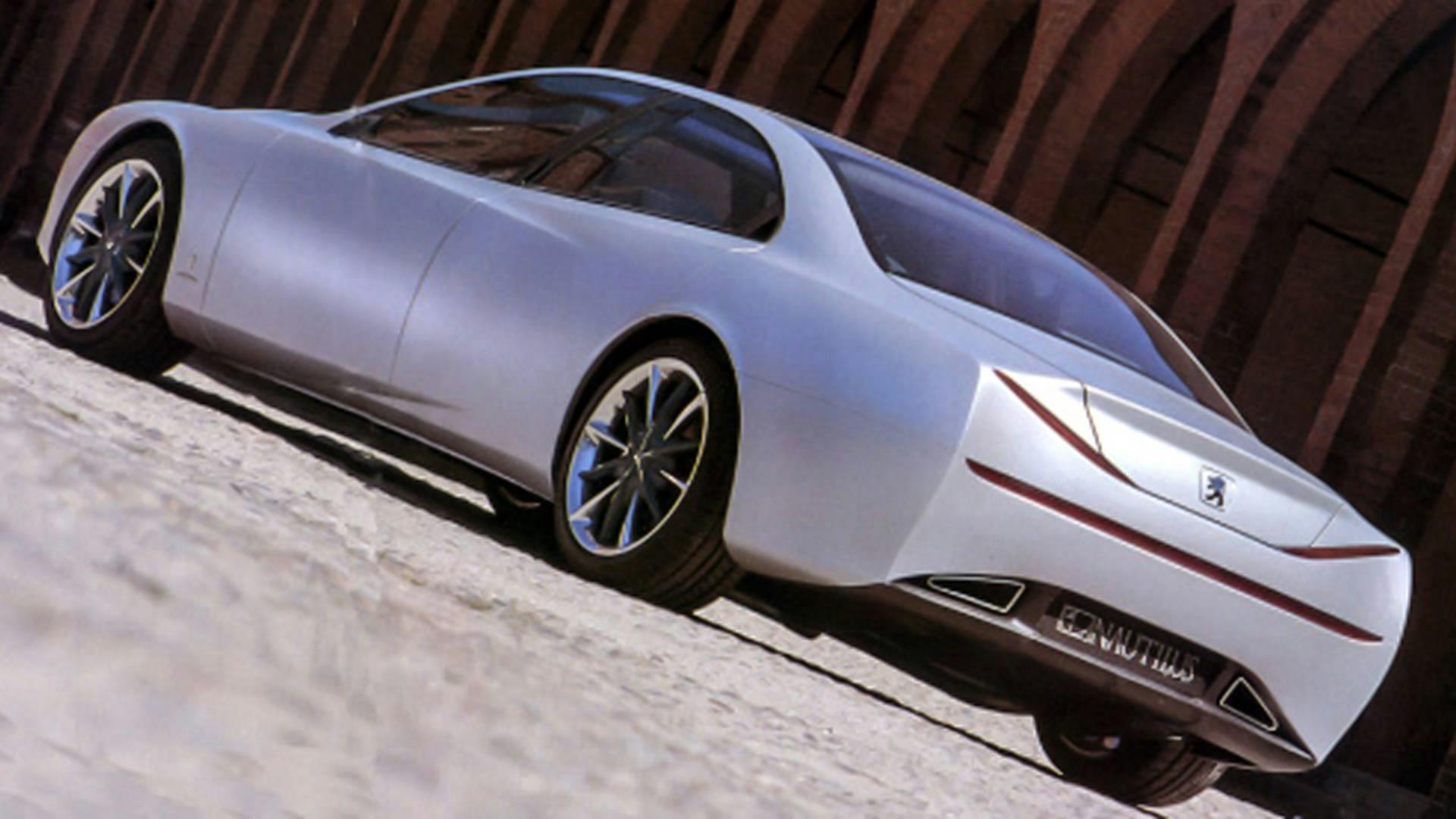
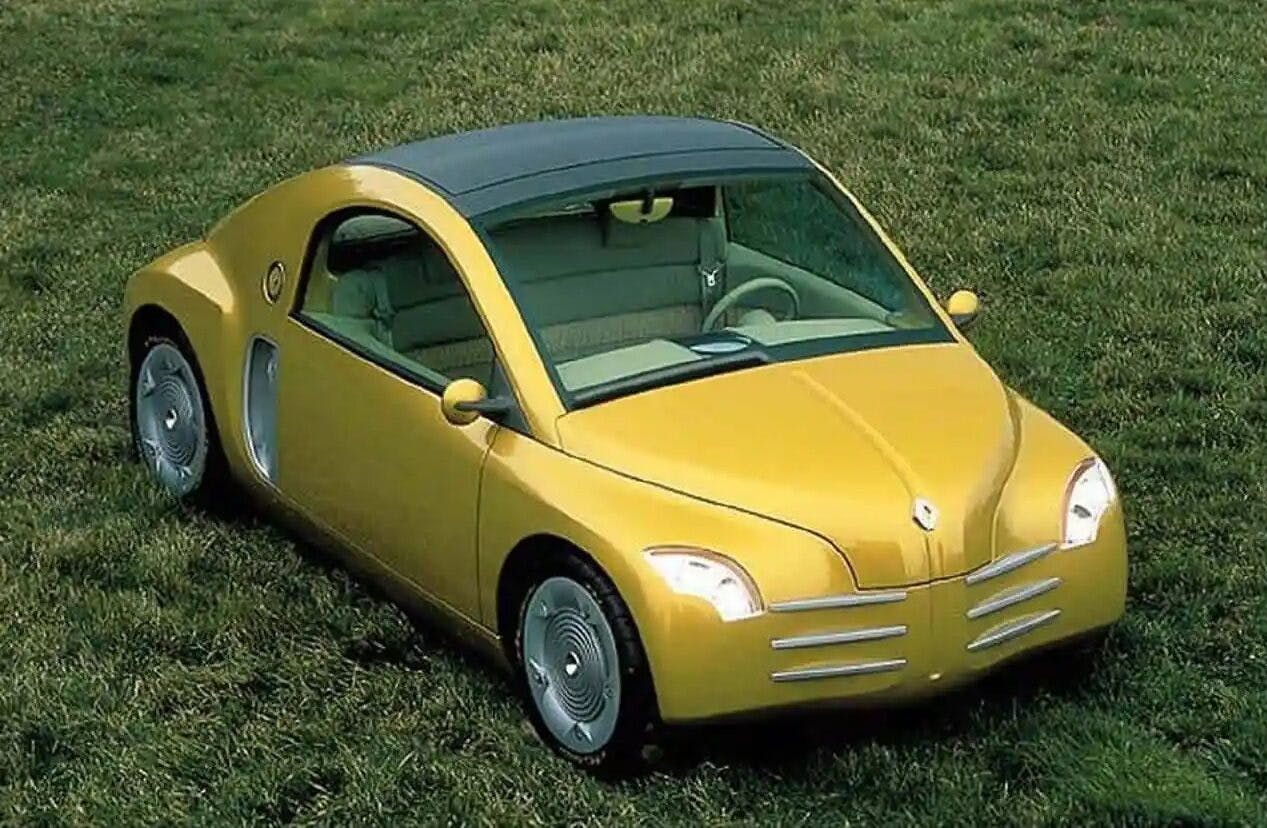
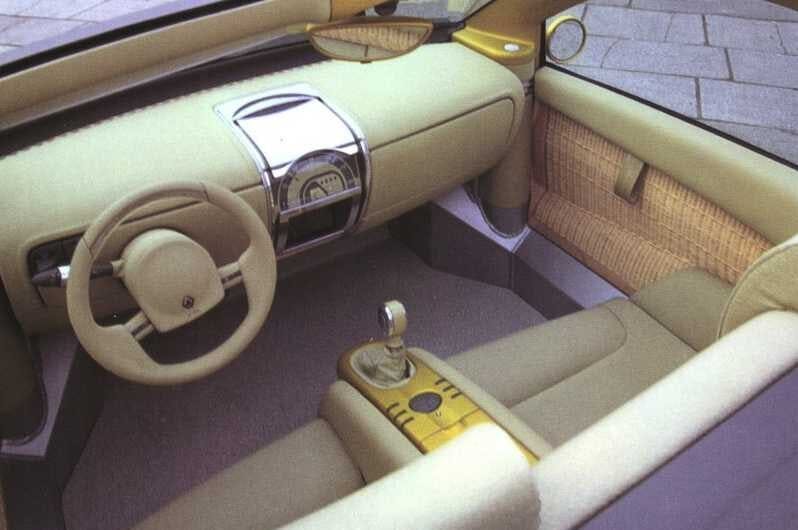


Some of these looking back are like the girl you did not marry and thank God you never did.
HAHA indeed!
It’s amazing what the mind can create knowing there’s no a hope in hell of these ever going in to production. The consumption of copious quantities of whisky only make things get better.
That Ford 021C… I need more angles to be sure, but I don’t think I like it.
But I could see it being made almost as-looks today, and being better than many EV concepts (and realities) we’ve seen the last few years.
It’s a cohesive design, just not to my taste.
It looks like it was designed to be included in the “CARS” movie.
Truly a vehicle that could’ve been designed by Duff Goldman, Ace of Cakes. A car entirely made of fondant…
The Ford 021C should have been relegated to the garbage bin. UUUUUGLY!
With designs like this, I understand why FoMoCo decided to only go with SUV and Trucks for the future…
I was at the XK180 debut and to this day have never seen that big of a crowd so taken by a single auto show car. Likewise the press loved it. Blend of E-Type, D-Type and XJ13. Sadly, with the end of the F-Type we will see the last of Jaguars that make you turn your head for a second look when you walk by.
I love the XK180, the body style is smooth and beautiful. I had at one time a XJ12L, and it was the most
comfortable car I ever owned, and I’ve had quite a few.
I’ll take the Mk1 Mini hiding in the background of the ACV30 Please…. Maybe the Spocket is referencing Spock- the doors kind of carry that visual
I like the Jag and the Peugeot.
What about the 1991 Nissan Figaro?
The Figaro wasn’t exactly a “concept car” since Nissan built a small production run and sold them to the general public. But sure, several of the concept cars reminded me of the Figaro too.
With a few exceptions to this list IE the Honda Sprocket, they all remind me of deformed jellybeans. It was the styling of the day, but as someone else mentioned, it is like that old girlfriend that you see years later and thank yourself for breaking up.
There is a lot of weird and some ugly here.
The Ford Ghia Vivace looks like some sort of weird Taurus Coupe.
I thought the same thing and it’s the same year that Ford Debuted the round everything 3rd generation Taurus in 1996. I owned a 1999. Despite the styling, It was roomy, comfortable and reliable.
The Honda Spocket would have been fun!
I agree, with a few tweaks, a pretty cool looking little pocket rocket!
Technically late 80’s but the Peugeot Proxima was the WILDEST of the KILLER 90’s sports concept
Production would have set them 10 years ahead of everyone else (again.) Check out these specs and try to disagree! https://en.wikipedia.org/wiki/Peugeot_Proxima
Chevy SSR looks like the front end was inspired by the Fiftie
Actually, the SSR front end was inspired by late 40s Chevy pickup trucks. Of course, it’s quite possible that the Fiftie front end was too.
More than a hint of Mark1 Sprite in the front end of that Mini.
The Ford 021C looks like a car I swear I saw in an animated movie I took the kids to. 😊 At one point, I had several other photos of this car from various angles, and including the interior. It’s actually a pretty cool-looking car. Obviously, it would not survive into production as-is, with FMVSS getting into the mix.
The Honda Spocket looks like a car that could have been a lot of fun to drive–a little pocket rocket–assuming it had a reasonable amount of power for it’s size and weight. It appears it wouldn’t take much.
The Peugeot Nautilus has aged well. A little tweaking and it could go on sale today. Several others appear to be more like design theme demonstrations intended to elicit feedback from car show audiences prior to being applied to next-gen production cars. The BMW face is immediately recognizeable from that era, even if it was attached to a rather hideous body. And the best part of that Alfa was the wheels that thankfully did see production.
One thing mostly in common: UGLY!